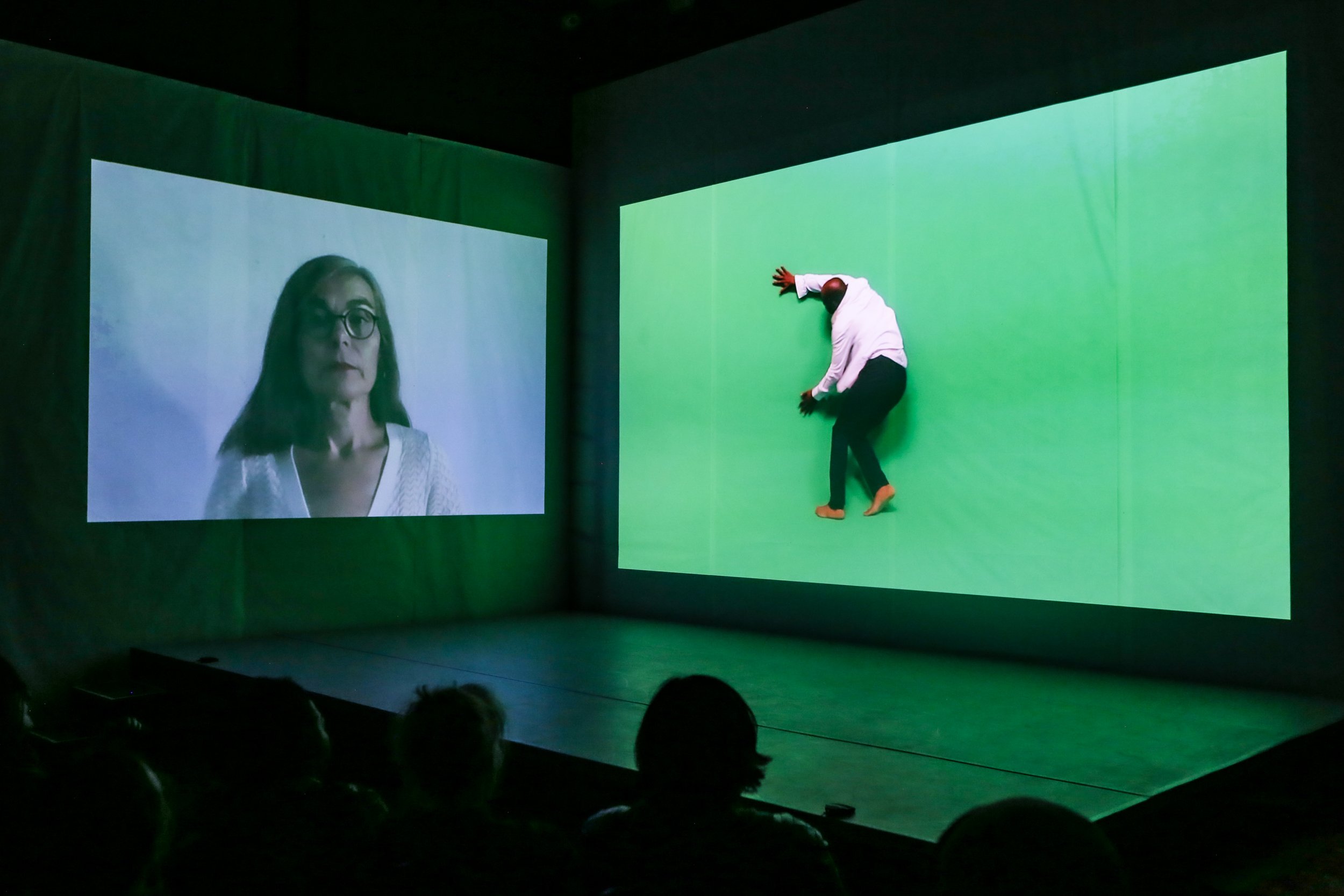In the film, projected onto a wall of the theatre space, a group of men pose for photographs in the bright, white light of the icy Kvitøya Island. Triumph and tragedy characterise the images. The men, a group of explorers on an expedition over the Antarctic, have become stranded. Their hydrogen balloon lies on the ice, deflated, and they have become trapped by the swift polar winter. They know they will die, but they also know that there must be a record. So, they turn to the camera.
Below this scene, a dancer and a musician are in conversation with each other and with the projected images. Each movement, each sound becomes a tool for reading, surfacing, and animating the story of these explorers. Through the act of performing the archive, we are able to activate and build upon its many parts.
On 5 August 2022, Brussels-based scenographer, filmmaker and long-time collaborator of William Kentridge, Sabine Theunissen screened her animated film Kvitøya at The Centre for the Less Good Idea.
Presented by SO | The Academy for the Less Good Idea the screening featured as part of the HOW | Showing the Making series which reveals the strategies, approaches and methods employed by artists in the making of their work. For her HOW, in addition to the screening and accompanying live performance by South African dancer, Thulani Chauke, and Benin-born percussionist, Angelo Moustapha, Theunissen provided insight into the making of the evocative and innovative Kvitøya through the sharing of her film-lecture, A Reversable Journey.
Theunissen’s HOW comes at the end of an intensive and generative workshop process at The Centre for the Less Good Idea titled Art, Archives and Performance, where artists, researchers and thinkers from across the globe – Brussels, France, Benin, Columbia, South Africa and more – came together to work through the body, through research and through a central photographic archive in order to better understand how we can enter and activate heavy and often-times controversial histories through the archive.
It’s fitting that Theunissen’s HOW closes the workshops, considering that it was one of her exercises for the Kvitøya process – that of assigning an archival image to each participant in order to generate a variety of artistic responses – that served as a central provocation and means of generating material for the Art, Archives and Performance workshop participants.
An expedition, a mystery
Kvitøya is freely inspired by the photographic documentation of the 1897 Polarex expedition in which three men set off to fly over the North Pole in a hydrogen balloon. The men, Nils Strindberg (a Swedish photographer, astronomist, physicist and violinist), Salomon Auguste Andrée (expedition leader and engineer) and Knut Fraenkel never returned. Their disappearance remained a mystery for over three decades until the remains of the expedition were discovered on White Island in August 1930. These included a diary and film rolls encased in a lightproof box.
Describing Kvitøya, Theunissen says, “Resolutely artisanal, the film is a tribute to the photographer of the expedition and his faith in Art. It twists the true story told by the diary found on White Island in 1931”. The title of the film “comes from a contraction between White Island and Black Box. The black box refers to the camera and photography, of course, but also to the sealed box keeping all the secrets and memories that will be revealed – a metaphor for Memory and Legacy.”
Surfacing and augmenting the photographic archive
Theunissen’s HOW is a performance lecture in two parts. The first is the guided lecture on the development of the project, A Reversable Journey – its challenges, tactics, tools and various stages of development. Following this is the screening of Kvitøya with live performance interventions from Chauke and Moustapha.
Through both parts of Theunissen’s HOW, we learn how the artist came to first pursue the project. From early incidental moments in Stockholm in 2017, where Theunissen began thinking about photography in the context of the museum and the museum as a kind of camera, to coming across a single black and white photograph of a deflating hot air balloon on the ice, sparking her interest in the Polarex Expedition of 1897.
But we are also able to gain a full and clear understanding of her artistic practice, her ways of working collaboratively, intuitively, using the intelligence of the hands, the cardboard model as a tool for seeing, performance as a means of reflection and augmentation, and collage as a form of collaborative reading or interpretation.
Ultimately, it is Theunissen’s rigour and research that creates access to the archive, but it is through the performances, collaborations, processes and methodologies held and facilitated by Theunissen that the archive is effectively animated and expanded upon.
– David Mann
PHOTOGRAPHER | Zivanai Matangi



